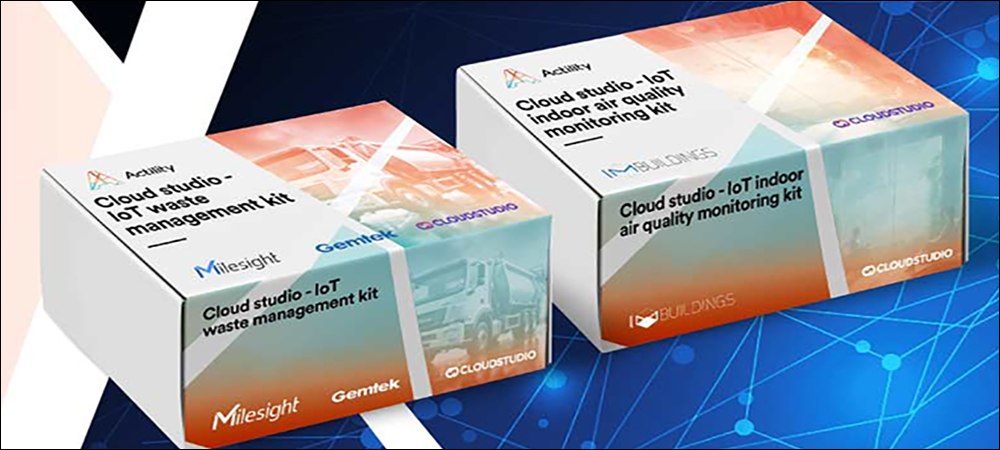Actility, a low-power wide-area networks (LPWAN) industrial-grade connectivity solutions provider for the Internet of Things (IoT), and Cloud Studio, an application platform provider offering a customizable, low-code, white-labeled and hardware-agnostic cloud solution called Gear Studio, have partnered on a pair of solutions designed to leverage the IoT to improve waste management and indoor air quality. The companies say their goal in partnering is to create a more sustainable, efficient and healthy world.
The resultant platform is intended for creating real-time monitoring and control dashboards, as well as digital twins and condition-based monitoring. It is integrated with Actility’s ThingPark Enterprise system, providing interoperability and connectivity solutions that are certified and compatible with LoRaWAN standards. The ThingPark Enterprise platform, accessible for free via the ThingPark Community, provides a LoRaWAN connectivity infrastructure that allows enterprises to build a multi-gateway network and feed data to IoT applications while streamlining IoT network operations.

To address the issue of waste management, Cloud Studio and Actility have introduced their IoT Waste Management Solution. The kit monitors fill levels in various waste containers, such as trash cans and dumpsters, with high precision and remote capabilities. When the containers approach full capacity, the system triggers alarms to alert cleaning personnel, enabling prompt action to be taken. This, the partners explain, proactively helps to prevent overflows, while reducing costs, energy consumption and carbon emissions, as well as promoting a cleaner environment.
The waste-management system is designed to provide an intuitive, precise and plug-and-play monitoring solution, according to the companies, which interacts with humans and machines to understand customer environments and contexts, ensuring data qualifications for optimal waste management. The partners have also unveiled their IoT Indoor Air Quality Monitoring solution, enabling users to monitor carbon dioxide concentration, temperature, humidity and occupancy levels in real time.
By triggering automatic alerts, this solution ensures that appropriate actions can be taken to improve air quality and reduce the risk of virus transmission. What’s more, the solution can be customized to fit the needs of various environments, and it utilizes data analytics to provides insights for improving air quality and boosting occupant health and productivity.

